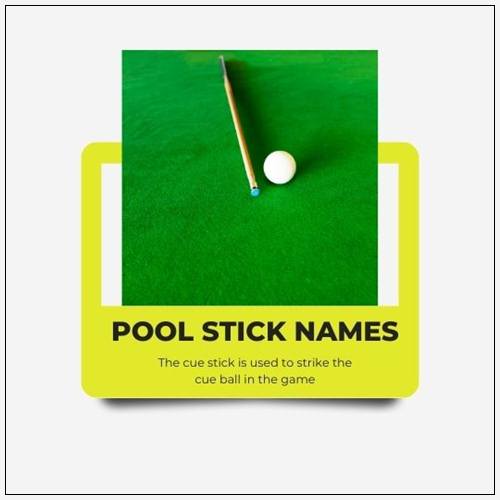
Table of Contents
Billiards Cue Stick: Components and Specifications, as well as how it’s made
The Billiards clear cue stick is one of the pieces of equipment that is essential to play Billiards. The cue stick is utilized to hit the cue ball when playing the game. They are employed in the pool, carom billiards and snooker. Cue sticks are generally taped and measure 57-59 inches (about 1.5 meters) in length and weigh between 16 to 21 ounces (450-600 grams), With pros in the direction of 19 ounces (540 grams) average.
The majority of cues are made from wood, but sometimes it is covered or joined with carbon fibre, graphite, or fibreglass. They employ regular cues as an alternative to their primary equipment as well as an even shorter cue for jumping shots. The cues used to shoot jump shots have a built-in edge with high tension.
Read More : What Are the Best Pool Leagues Near Me
Types of a cue sticks that are used in Billiards
One-piece cue One-piece cues are the simplest and the most popular type of cues in Billiards. They are constructed as one piece with no joints. They are tapered uniformly and then gradually shrink in diameter from the point of the butt to the edge.
Two-piece cuesThe two-piece cue comes with a section in the centre that makes it easier to carry. The cue is easily folded to ensure it can fit into the cue case or into any other pouch.
Two-piece cue that has a joint It’s also referred to as the three-quarter-two-piece. Two-piece cues feature joint display in the downward one-third location in the cue. The joint is 12 to 16 inches from the point.
The components of Billiard Cue Sticks
Cue sticks are made in one piece, by two pieces, or even with joints in the middle. The majority of the top-quality cue sticks are constructed using two pieces of hardwood, like maple wood, joined with phenol or metal resin. Beginner cues are constructed from middle-quality maple wood, with tips and shafts made of plastic. The top-quality cues are made out of golf wood and graphite.
Cue sticks are the standard cue sticks. They contain the following elements:
Butt end The butt endThe edge of the cue is greater circumference and desires to be held easily and offer a secure grip to the users. The region is also known for its butt ends.
Shaft Shaft The longest portion of the stick is made of wood that has a narrower area than that of the butt-end. Its length is 0.4 inches up to 0.55 inches (10 to 14mm).
Ferrules This is the final part of the shaft that is made from brass or fibreglass.
TipThe point is put over the ferrule, which is used to hit the ball. Usually, a small amount of chalk is placed on the tip in order to improve the friction and add the ball with a spin while hitting the table. The tips are primarily made of leather and then glued by glueing them to the ferrule.
Bumper It is the last component of the cue composed of either leather or rubber. The bumper shields the cue from accident-related damage caused by hitting or falling.
Read More : How to Hold a Pool Stick?
The Billiard cue sticks that were utilized in the past
In the year 1600, cue sticks were developed using mace, which was like lighter heavy golf clubs. They were used to push instead of hitting on the cue ball. In 1670 it was time for a fundamental change. A stick was substituted for mace, which included a butt and greater circumference. In 1800, the evolution of the term “stick” to “cue stick became official. It was in 1807 that Francois Mingaud became the very first person to study the tip of the leather on a cue stick for billiards.
In the 19th century, the tips of the sticks were not smooth enough to hit balls when they were first. Players used to twist their ends on an area of plaster or ceiling to enhance the stick’s friction and maximize the potential of the stick. The powder was considered to be twisting powder. In the past, ferrules were constructed of ivory in order to secure the cue’s tip securely. The joints were threaded and were constructed of either wood or non-metals, such as brass, steel, etc.
The Billiard cue sticks are used in the present day.
Nowadays, the shafts are made according to a two-piece model with custom tapering. The leather tip can also be replaced with faux leather and other fibres made of synthetic to hit the ball with more effectiveness. Synthetic fibre is less prone to humidity and moisture and requires lesser frequent sharpening. Cue tips are no anymore made from ivory-based materials and were developed using different carbon fibres. This fibre is composed of melamine or phenol resin, as well as premium plastics. The carbon fibre acts as a gunmetal material and prevents natural breaks and cracks. The joints are threaded in half and come with a “quick pin release” mechanism to fold the sticks.
Leave a Reply